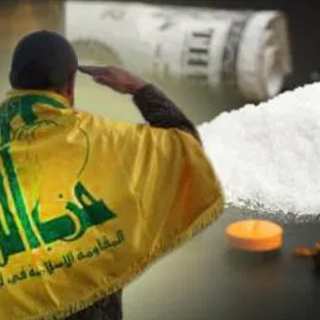خالد أبو زهر: مطلوب من الأحزاب اللبنانية التي تقف ضد حزب الله أن تتوحد بأي طريقة ممكنة
Lebanon’s anti-Hezbollah parties should unite in any way they can
Khaled Abou Zahr/Arab News/June 24/2022
Following the 2005 assassination of former Prime Minister Rafik Hariri, the political landscape in Lebanon was divided between the March 14 and March 8 movements. March 14 was a gathering of all the political parties and voices standing against the Syrian occupation. March 8 was represented by Hezbollah, Michel Aoun and other pro-Syrian movements. Through violence and assassinations, intimidation and other ruses, the March 14 alliance was beaten. The knockout blow came on May 7, 2008, when Hezbollah invaded Beirut. This was the end of the March 14 alliance.
In reality, March 14 had, from the start, a dysfunctional structure. With no real leadership, structure or capacity, the alliance was imploding from within. It was unable to face the ruthlessness of Hezbollah and the Iranian regime’s takeover of Lebanon. In the face of this violence, it might not have been able to survive even if it was united and in complete solidarity. But we will never know.
And so, as March 14 disintegrated, analysts stopped representing the political struggle in Lebanon as one between March 14 and March 8, or even as a fight for freedom and real independence. This made it seem as if both alliances had dissolved. In reality, March 8 was still alive and kicking and it has been the ruling regime ever since, bringing in the coercion of all others. Even some of its opposition ended up collaborating with it.
As early as 2006, the March 8 alliance had transformed into an iron-clad political agreement. This happened in the form of the Mar Mikhael Agreement.
The name is in reference to the first meeting between the head of the Free Patriotic Movement, then-MP Aoun, and Hezbollah Secretary-General Hassan Nasrallah in the Mar Mikhael Church in Haret Hreik, south Beirut. This marked the full political alignment between the FPM and Hezbollah. Through thick and thin, international condemnation and sanctions, this political movement has been moving forward. There is no doubt that the leader is Hezbollah and it calls the shots. Nevertheless, it is a unified bloc on all matters.
On the other hand, its opposition is a fragmented and diversified group with no coordination or common vision for Lebanon beyond slogans for freedom, sovereignty and independence. As one would say when expecting a payment and instead receiving a compliment: Where do I cash this check? Where does this opposition, with its newcomers, cash the political gains it made in the recent elections? There is, in fact, a greater risk of losing it all.
There is not much difference between these political formations and the leaderless youth that started protesting in October 2019. In the face of the adversity of Hezbollah and the Iranian occupation, they are unable to achieve any real political gains. They do not seem able to disrupt the activities of Hezbollah even in the slightest.
I have, unfortunately, little hope of seeing this change in the future. And Hezbollah will continue to use these divisions to further its own interests and continue its control over the country. When it comes to the reasons for these divisions among the remnants of March 14, I am convinced that it is not about religion. It is about too many egos and the lack of a clear vision and strategy for the future. And, as always, a lack of hard power. Let’s face it, even in a democracy, political parties are effectively dictatorships, with leaders having enough muscle to silence any dissent.
In Lebanon, besides Hezbollah, no other formation can do this. Saad Hariri could not impose anything on Samir Geagea or Walid Jumblatt. This is still true today with the current actors.
But this fragmentation goes deeper. How can a left-wing political party align itself with a right-wing one? How can political groups fight together for the same platform or agenda when their definitions of sovereignty and freedom are different? This is mission impossible. Indeed, each group has its own view on what the country’s institutions should be and what the meanings of freedom and sovereignty are. More importantly, even the political structure does not allow for a common agenda to be built. It is a political structure of transactions and deal-making, not one of nation-building. The recent events around the central bank are, if needed, further proof of this.
There is the possibility of Hezbollah and its allies either controlling or, in a worst-case scenario, leading the consensus choice for PM.
As President Aoun has started the parliamentary consultations with the objective of naming the next prime minister, it is important to recognize that, if all the opposition to the Iranian regime and the anti-establishment MPs united under the same umbrella, they could probably reach enough seats to propose the next PM. Yet, in reality, there is little chance of this happening, as they will probably be divided on names, details and political influence. This leaves the possibility of Hezbollah and its allies either controlling or, in a worst-case scenario, leading the consensus choice. Once again, they will be controlling the government while making the opposition bear responsibility for all its ills.
This is why the opposition to Hezbollah and Iran should in reality be described as a resistance. And the political parties should not enter into any deal-making. They should block every single decision. They might not be able to unite to form a majority that is capable of governing, but they can unite to slow Hezbollah’s advances. However, this should only be seen as a temporary solution.
*Khaled Abou Zahr is CEO of Eurabia, a media and tech company. He is also the editor of Al-Watan Al-Arabi.






















